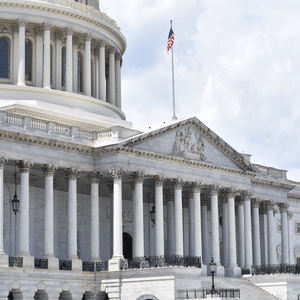Table of Contents
ToggleVery few countries in this world operate without some form of a legislative branch of government. Roughly 60% of the nations in the world function under what is known as a unicameral legislature. Generally, the rest of the world, including the United States, adopts a bicameral system.
What is a bicameral legislature?
In bicameralism, the legislature exists as a single body separated into two distinct chambers or assemblies. In the United States, these two distinct chambers are the Senate and the House of Representatives. The Senate is also referred to as the upper chamber, while the House of Representatives is the lower chamber.
The Constitution and Representation
Under the Constitution, each state is guaranteed equal representation and can elect two senators for six-year terms each.
The House of Representatives, on the other hand, is composed of 435 representatives, who are elected to represent their district only. The delegates of the lower house are elected to only a two-year term.
The Founding Fathers
At the founding of the United States, the architects of the United States Constitution believed in the importance of establishing a bicameral legislature. They believed that the Senate, or the upper house, was to be composed of wealthier and wiser citizens. As such, it was created with the sole purpose of stabilizing the legislative process.

In its original form, the Founding Fathers preferred that each individual state legislature appoint senators. But as a result of the ratification of the 17th Amendment, the power to appoint, or more specifically elect a senator, fell to the people for whom that senator represents.
The House of Representatives, on the other hand, exists as a representation of the ever-evolving nature of a growing nation. Delegates in the lower house are elected based on districts, and these districts, are created after the decennial census. Under the apportionment clause, the total number of congressional representatives would be divvied up in a manner that was representative of the population of each state.
Unlike the upper house, the lower house representatives were reelected every two years by the citizens living within their district. This allowed the composition of the lower house to be more in step with the evolution of society within America.
The Rationale for Having Two Chambers
A bicameral system is one of the most popular forms of legislature adopted by federalized nations. The reason for this is that everyday Americans’ political views and beliefs change regularly. As these views change, their choice in representation also changes. The lower chamber exists as the voice of the people demanding change, while the upper chamber exists to stabilize that change over time.
This concept of what has become known as a “sober second thought” allows most legislation to begin in the lower chamber, based on the ever-changing views and opinions of the general population. The legislation then evolves through the decision-making process that starts as a proposal and eventually becomes a bill. Once the lower chamber passes a proposal, it is provided to the upper chamber for a “second opinion.”
It is here in the upper chamber where the Founding Fathers envisioned that the wealthier and wiser members of Congress would be able to take a closer look at the decision of the lower chamber to determine if the proposed bill is truly beneficial to the nation.
Today, both the upper and lower houses of Congress exist with equal power. Any bill introduced in the lower house must eventually make its way to the upper house before it can be sent to the desk of the president. At the same time, any bill introduced in the upper house must eventually make its way to the lower house before it goes to the president.
Bicameralism provides checks and balances to this legislative process. It prevents the creation of ill-considered legislation from making its way to the president’s office. But, it can also prevent the creation of sound legislation from making its way to the president due to deadlocks.
The Upper Chamber
There are 50 states in the Union. Each one of those states is guaranteed the right to equal representation in Congress. The Connecticut Compromise ensured each one of those states is guaranteed two senators.

When the United States Constitution was first created, each senator was appointed by the individual state legislatures. Each state was entitled to appoint two senators every six years to office. The problem with this initial system was that the senators often represented the interests of only their state’s government rather than the people within the state.
Eventually, after the 17th Amendment was ratified, the power to elect senators was transferred from the state legislature to the people within the state. To ensure that the federal government stays operational, the 100 senators are divided into three classes so that no state would have to elect both senators at the same time. This meant that every two to four years, the citizens of each state would elect one of their two representatives to serve in the Senate.
Under the Constitution, the Senate has a special responsibility known as advice and consent. This means that to fill certain government positions, the President of the United States has the power and authority to nominate anyone that he or she sees fit. But, it is the Senate’s responsibility to hold hearings to “interview” that nominee. Through this confirmation process, the Senate decides whether to affirm or deny that nomination.

Get Smarter on US News, History, and the Constitution
Join the thousands of fellow patriots who rely on our 5-minute newsletter to stay informed on the key events and trends that shaped our nation's past and continue to shape its present.
The Lower Chamber
There is a total of 435 voting members of the House of Representatives. Each of these members represents districts that are based on the overall population of a state in comparison to the total population of the nation. To determine how many congressional representatives each state gets, the Apportionment Clause of the Constitution requires a decennial census to be conducted.
Like the upper chamber, the lower chamber also has a special responsibility. Under the Constitution, many congressional acts relating to budget and taxation must be initiated in the lower house. The Senate may not initiate any legislation relating to the nation’s financial interests. Rather, they may only take on legislation after it has passed through the House of Representatives.











